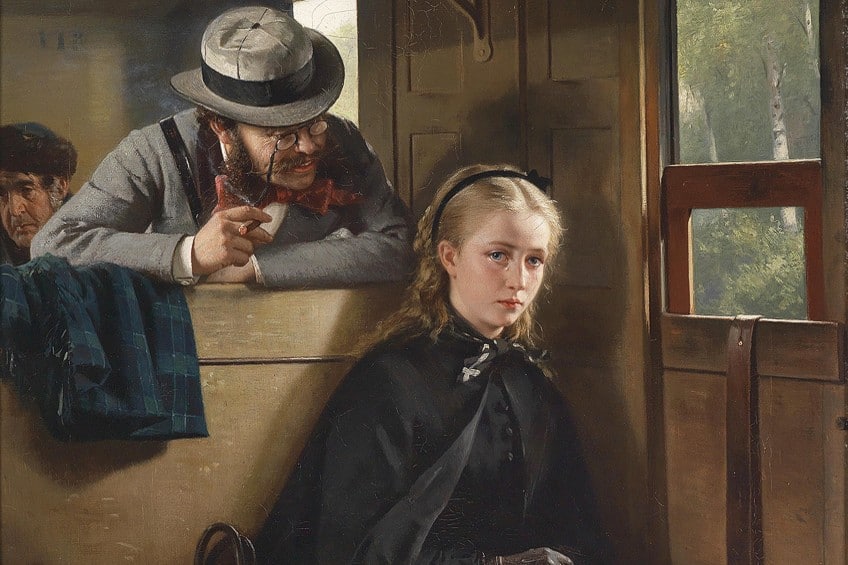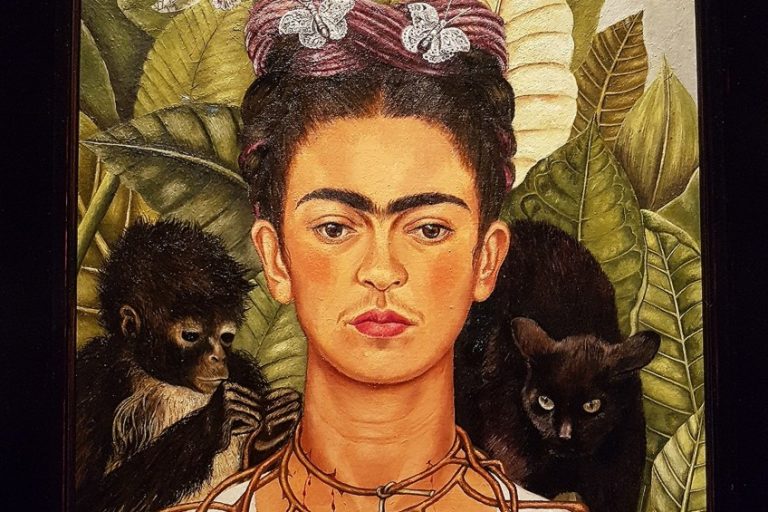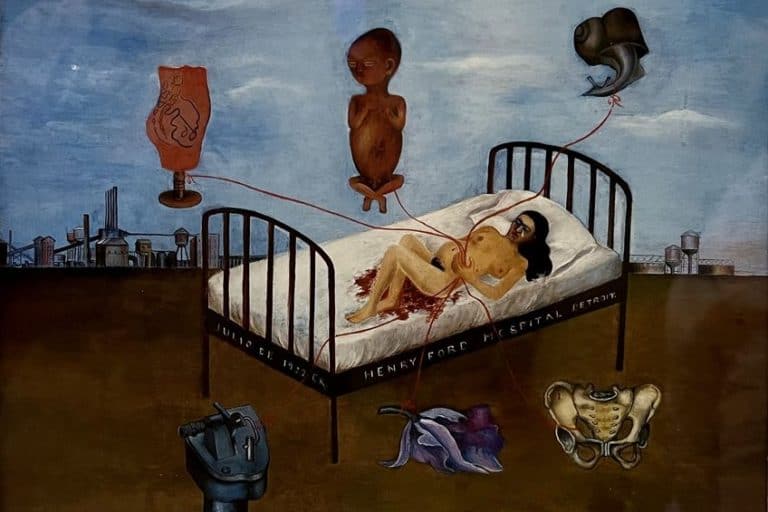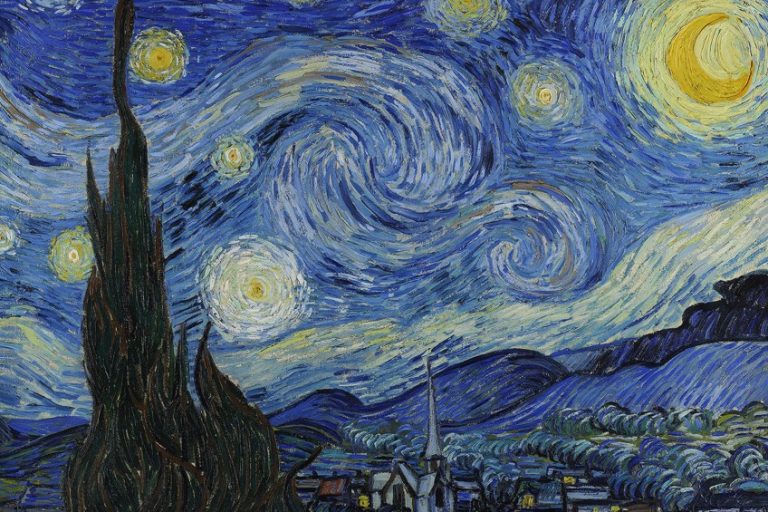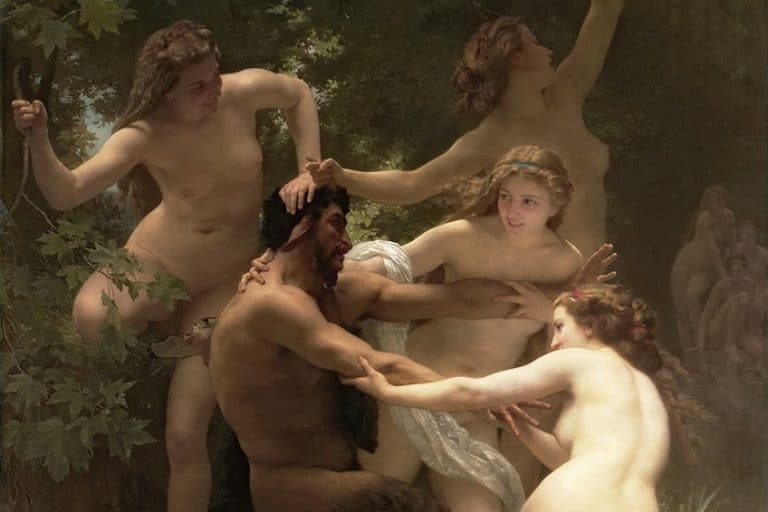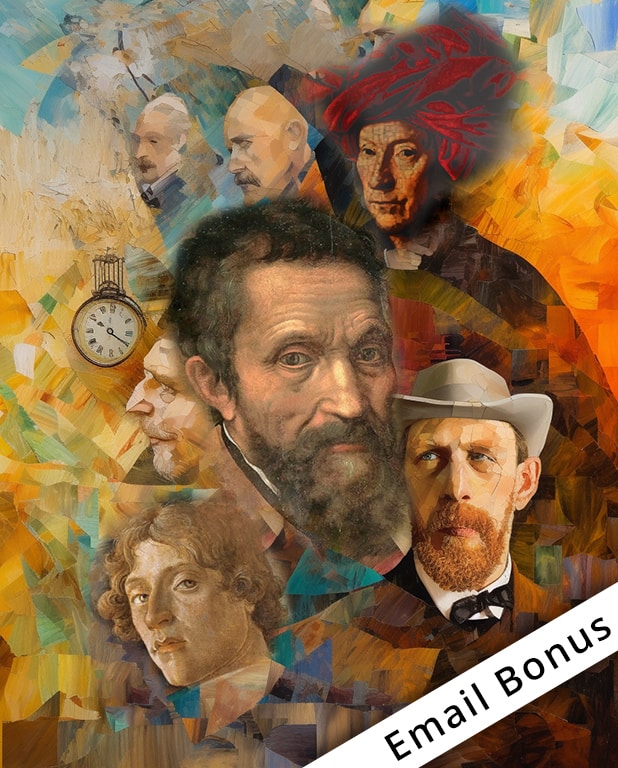“The Irritating Gentleman” by Berthold Woltze – Art of Annoyance
The German artist, Berthold Woltze, was known for his often awkward and perplexing subject matter of scenes that left the viewers guessing and creating their own narrative around it. The Irritating Gentleman (1874) is one of these paintings. Read more about the work in this article below and form your own interpretation of it.
Artist Abstract: Who Was Berthold Woltze?
Berthold Woltze was born on August 24, 1829, in the German town called Havelberg, and died on November 29, 1896, in Weimar city in Germany. While his history is not extensively documented, prominent parts of his life included him being a professor at the Weimar Saxon Grand Ducal Art School. He also published numerous paintings in the German newspaper Gartenlaube (1853 – 1944).
Some of Woltze’s paintings include A Letter From America (c. 1860), Good Advice is Expensive! (1873), and The Letter (before 1896).
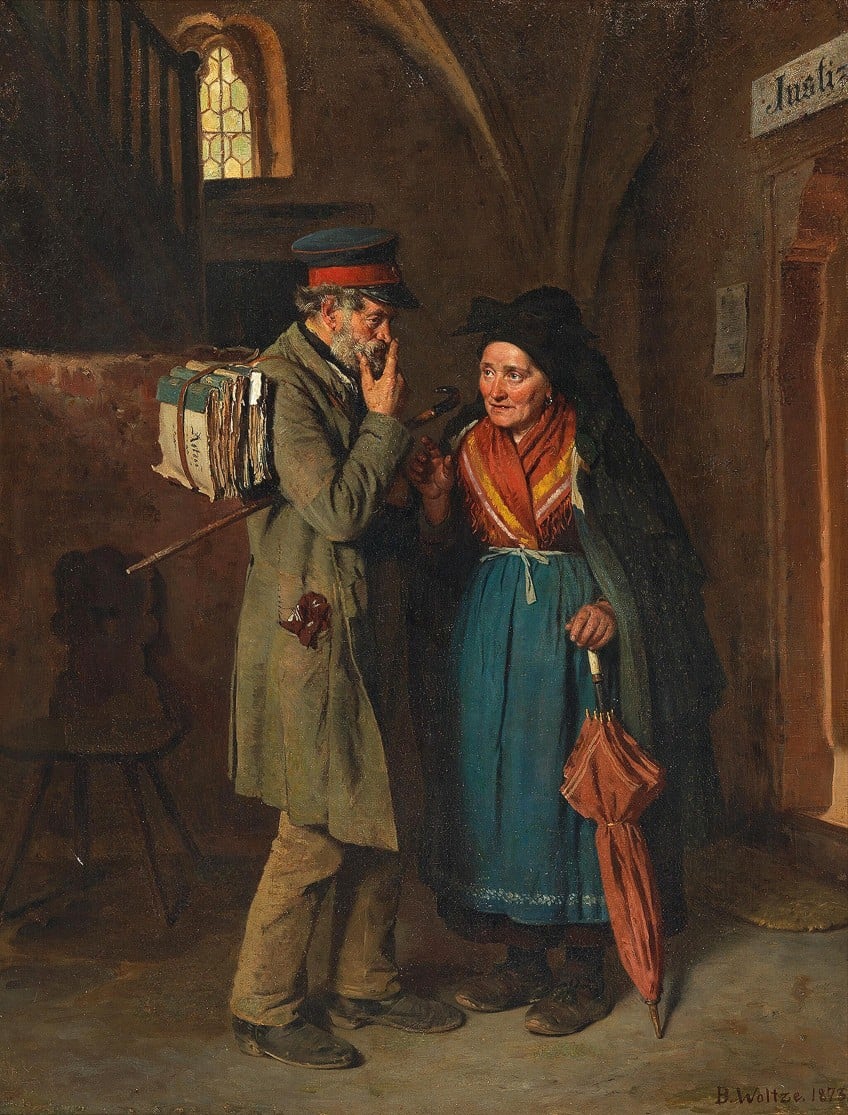
The Irritating Gentleman (1874) by Berthold Woltze in Context
| Artist | Berthold Woltze (1829 – 1896) |
| Date Created | 1874 |
| Medium | Oil on canvas |
| Genre | Genre painting |
| Period/Movement | Realism |
| Dimensions (centimeters) | 75 x 57 |
| Series/Versions | N/A |
| Where Is It Housed? | German Historical Museum, Berlin, Germany |
| What It Is Worth | The price is uncertain. |
The Irritating Gentleman analysis will start with a socio-historical overview of when it was painted, providing more information about the type of painting this was. A visual description will provide more information about the subject matter, after which the formal, stylistic, aspects will be discussed in terms of elements of art.
Contextual Analysis: A Brief Socio-Historical Overview
Berthold Woltze was a genre painter that depicted everyday scenes, but he was also known for the type of paintings known as “problem paintings/pictures”. These consisted of subject matter with mysterious narratives that left the viewer wondering or guessing about what was happening. This is what you see in The Irritating Gentleman genre painting.
A young girl appears in a sad state, dressed in black, with many stating that she may have been on her way to, or coming back from a funeral. She also appears to be traveling alone in a railway carriage. There is a sense of discomfort in this painting, caused by the man who is talking to the girl, but not aware that he is overstepping her boundaries.
This raises questions about what he is saying to the girl, and why. Another popular “problem painting” by Berthold Woltze was The Letter (1896), which depicts a woman leaning against a wall and loosely holding a letter in her left hand on her lap as if she just read it. Her daughter is tugging at her arm and the woman has a downtrodden stare, as if she just read something disturbing.
Formal Analysis: A Brief Compositional Overview
The Irritating Gentleman analysis will look at this “problem painting” further and offer a closer description of the scene. The formal art qualities will also be discussed and are referred to as the elements of art, and often considered as the “building blocks” of an artwork.
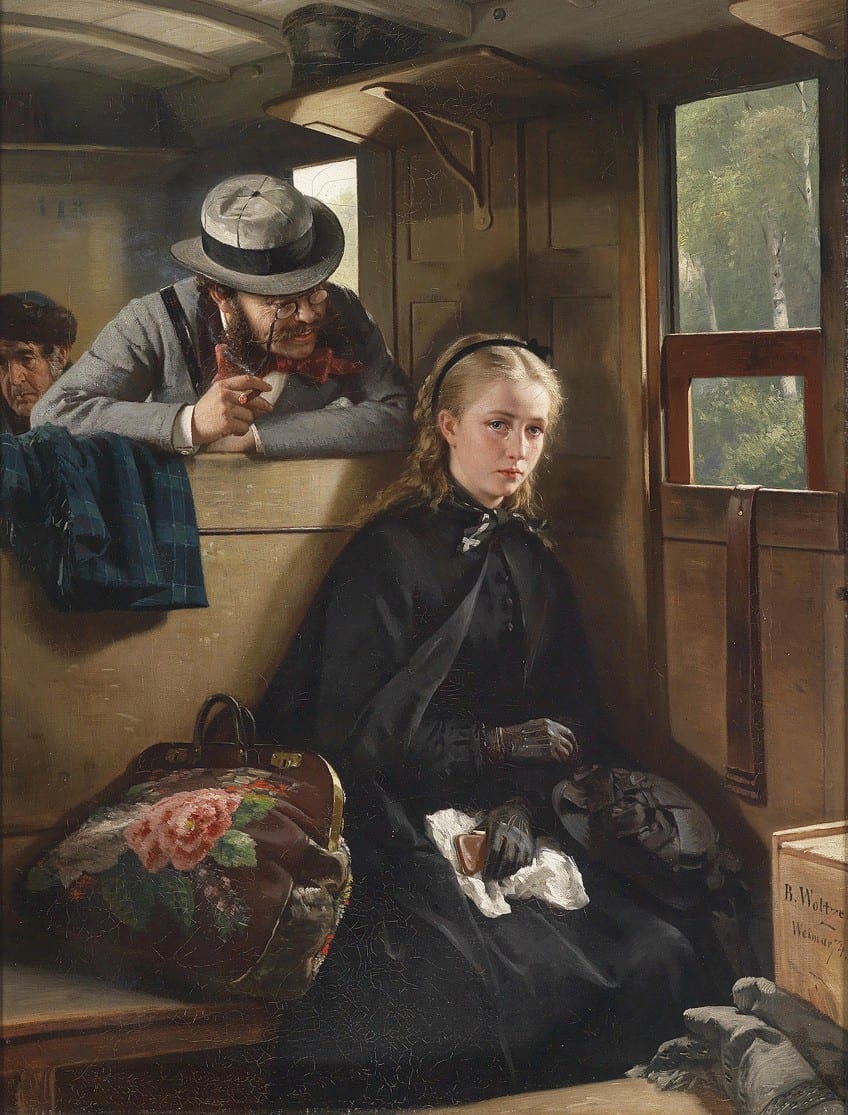
Subject Matter: Visual Description
The Irritating Gentleman depicts the interior of a railway carriage with three figures in the scene. The primary figure, in the foreground, is a young girl who is sitting alone on the carriage seat with only her bag next to her, on her right (our left), an older man, more into the middle ground, who is leaning over the back of the girl’s seat and facing her, and another man in the background.
Looking at the girl, she is in all black and appears to be crying, possibly mourning/grieving someone who died. She is wearing what appears to be a black dress, or possibly a black skirt and blouse with buttons, and a black coat over it. She has a black ribbon in her loose blond hair, which falls to just below her shoulders and what appears to be a black and white ribbon fastened around her neck.
Her arms and gloved hands are folded over one another on her lap. Her right hand is holding her black hat and her left hand is holding a coin purse with a white handkerchief weighted down underneath it. Her gloves are also black but appear somewhat off-black, almost dark brown, and slightly worn in some parts. The girl is looking at us, the viewers. She appears to be leaning slightly to her left and somewhat uncomfortable. Behind this girl is an older man, leaning over the back of her seat and engaging with her, while she is clearly not interested in his advances.
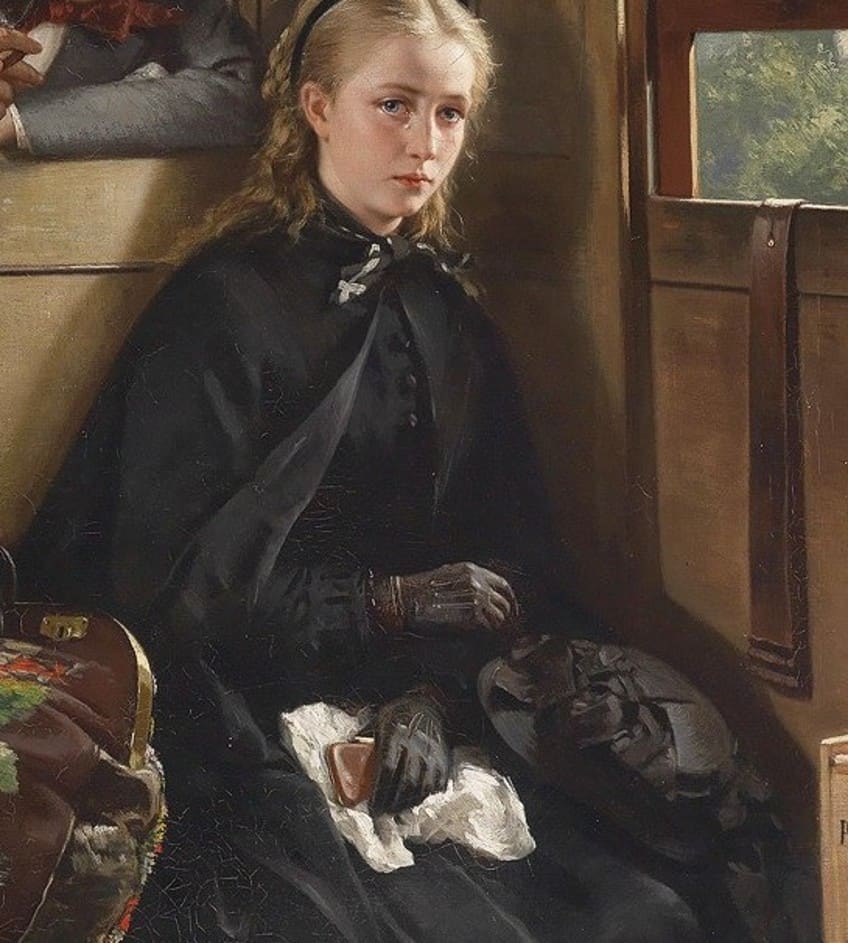
The man is smiling while looking at the young girl and holding a cigarette in his right hand. His left elbow is leaning on the back of the seat. He is wearing a gray suit and white shirt underneath, what appears to be a pair of pince-nez glasses, a gray hat, and has an elaborate mustache, possibly what is known as a handlebar mustache, and just as elaborate red bow tie. A jacket hangs over the wooden seat on the man’s right (our left).
In the far background is another man, only his face is in view on the upper left edge of the composition, of which part of his head is cut off by the edge of the painting.
He appears older and is wearing a fur hat. He appears to have a downward gaze and his head is slightly tilted to his right (our left) as if he is disengaged. In the lower right corner of the composition is a wooden box with the artist’s signature painted on it, stating, “B. Woltze. Weimar ‘74”. Next to the box, on the right (our left) are two gray rolled-up pieces of fabric, possibly drapery of some kind.
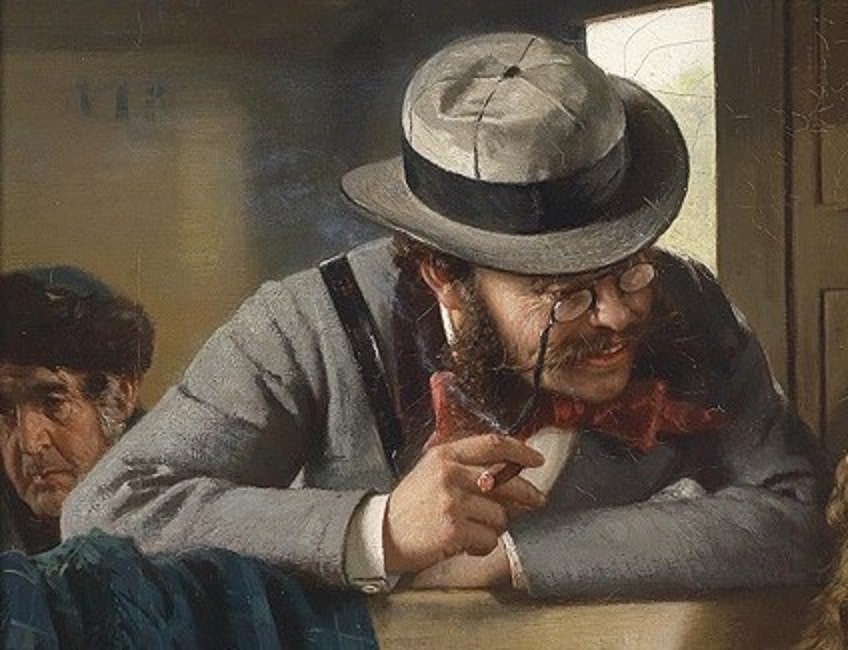
There are two windows in the carriage, the girl is sitting next to one, on her left, and there is one in the background. The scenery outside suggests daylight and consists of trees and shrubbery with a hint of a blue sky in the background.
Color and Value
The color scheme of The Irritating Gentleman is composed of neutral colors like blacks, browns, grays, and whites, with pops of color like reds, pinks, blues, and greens. Woltze created a sense of light, for example, the cast shadow on the inside of the carriage and other darker areas, which creates a contrast in color value.

Texture
Some of Berthold Woltze’s brushstrokes are physically visible on the canvas of his painting The Irritating Gentleman, for example, notice them on the gentleman’s hat and suit or on the girl’s white handkerchief. There is implied texture from the brushstrokes. For example, notice the short, choppy brushstrokes composing the flower on the girl’s bag, which indicates the texture of the material the bag is made from.
Notice the smoother brushstrokes on the wooden seat, which gives the impression of its smooth and hard surface or the finer slivers of paint for the girl’s hair.

Line
Naturalistic lines delineate the subject matter in The Irritating Gentleman by Berthold Woltze. Some of the lines are more naturalistic, for example, the natural curves of the figures and their clothing. Some of the lines are more geometric, for example, the straight vertical and horizontal lines that delineate the inside of the carriage’s structure. These lines define the interior space and almost cordons off, or retain, the figures in the positions.

Shape and Form
The Irritating Gentleman by Berthold Woltze consists of naturalistic and geometric shapes and forms. Other art elements like color and shading create a sense of three-dimensional forms, for example, part of the cubic form of the wooden box in the lower right corner. There is also a sense of two dimensions in some of the shapes created by the varieties of lines.
For example, the rectangular and square shapes of the windows, the vertical rectangles of the wooden panels of the carriage’s interior, or the more elongated horizontal rectangular shape of the wooden bench.
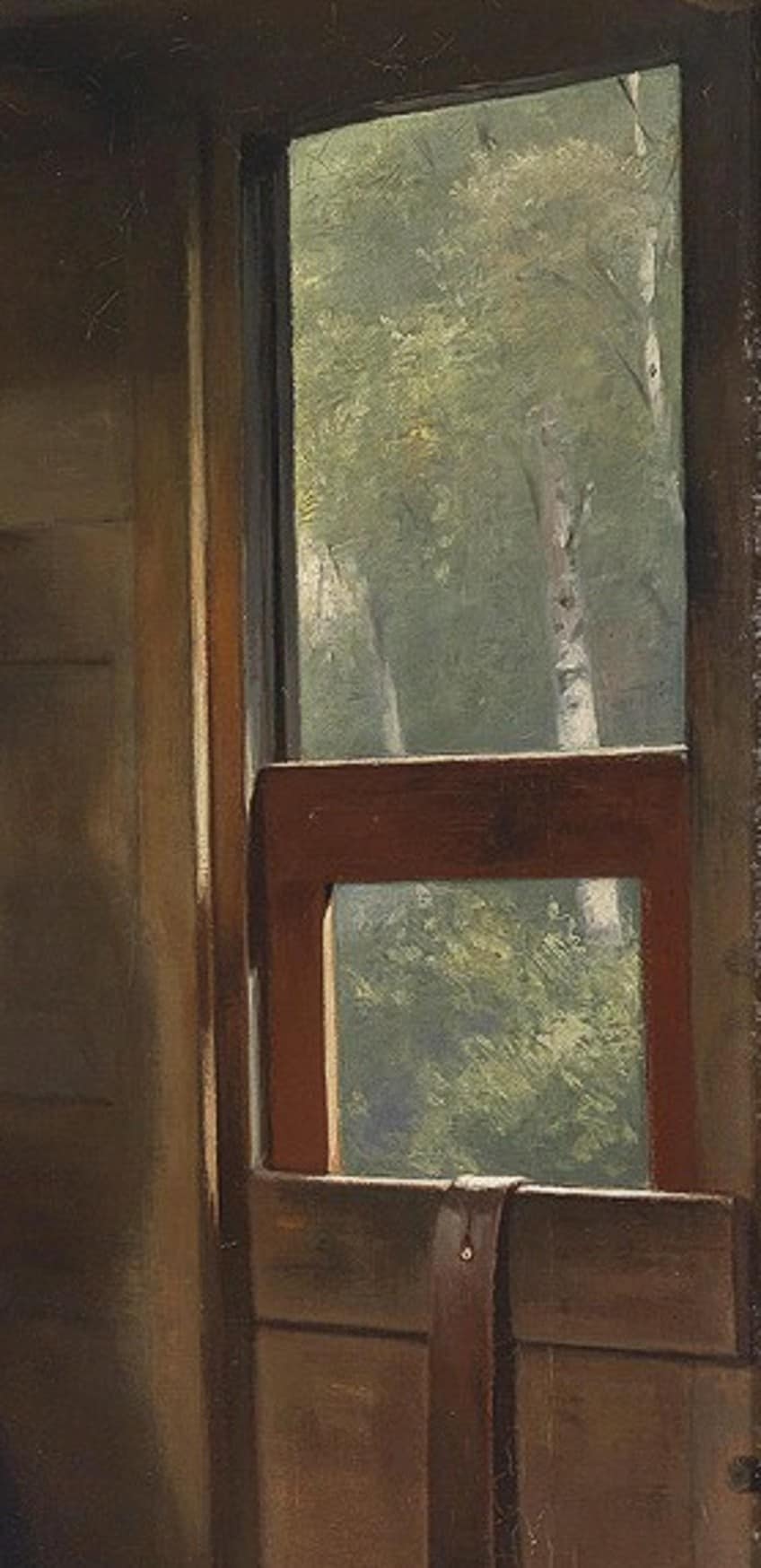
Space
The space depicted in The Irritating Gentleman by Berthold Woltze is an interior, however, the artist remained within a limited space, focusing on the young girl and her interaction with the man, which heightens the tension and apparent discomfort. Depth is conveyed by techniques like scale and blurring, for example, the far background, visible through the back window in the train carriage, appears hazy and not as in view as the foreground.
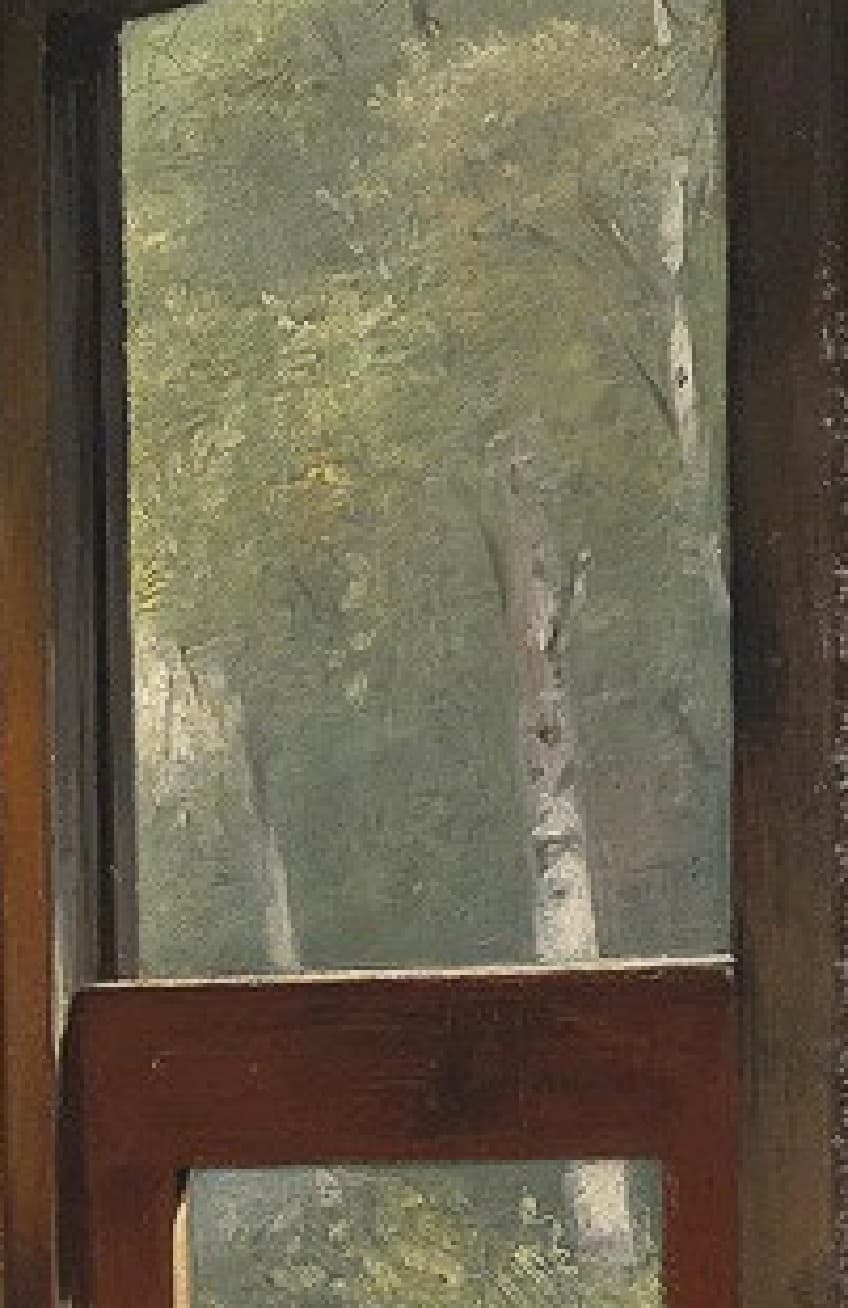
Please Take a Seat
While not much was known about Berthold Woltze, what he was known for was his genre paintings of scenes of everyday life and people in their environment. It was often with a touch of realism that offered a window into the lives of his subject matter. Such is evident in The Irritating Gentleman painting discussed in this article.
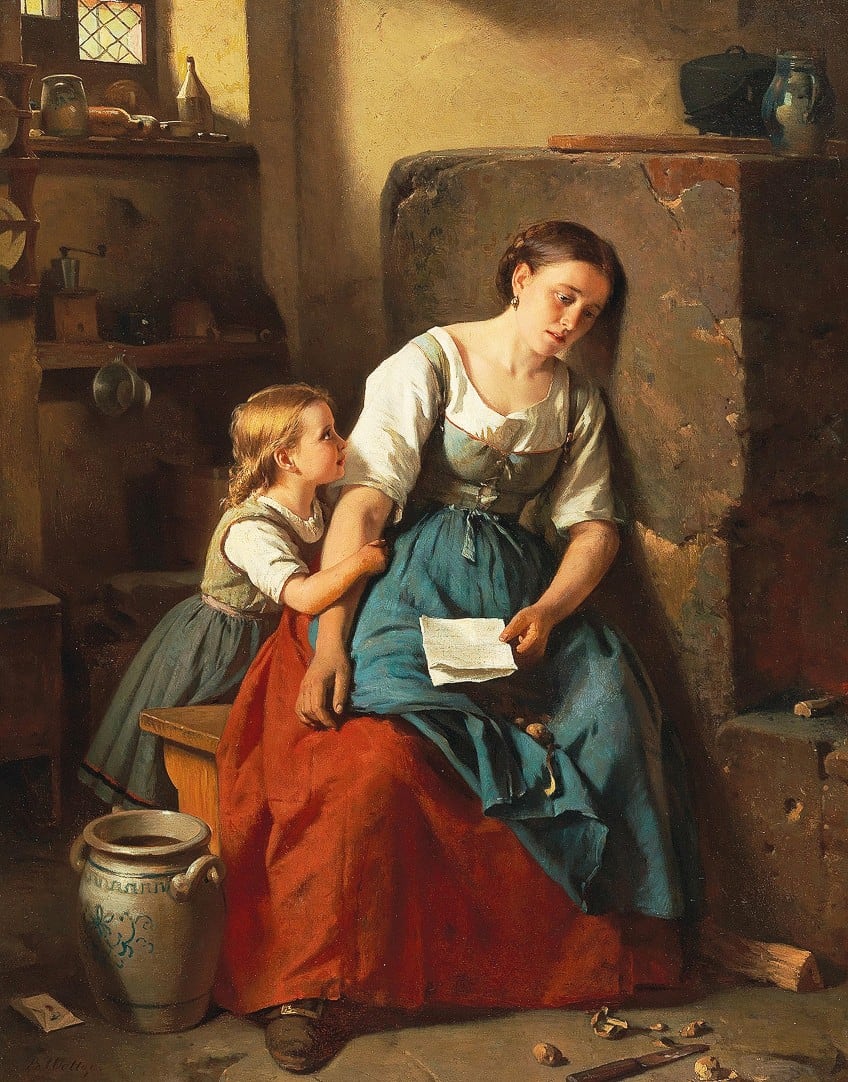
While Woltze’s The Irritating Gentleman depicts a level of realism in its artistry, it is also a telling portrayal of a young girl who is undoubtedly uncomfortable by the man behind her. She is left in her seat and looking at us, her eyes and tears reflecting a great many questions and emotions, leaving us to discern the answers.
Frequently Asked Questions
What Is That Painting of an Annoying Man?
The Irritating Gentleman (1874) is a painting by the German artist Berthold Woltze. It is titled as Der lästige Kavalier in German, and is sometimes known as The Annoying Gentleman.
What Is The Irritating Gentleman Painting About?
The Irritating Gentleman (1874) by Berthold Woltze depicts a man talking to a young girl who appears uncomfortable. This painting has been categorized as a so-called problem painting, which was a type of painting that raised questions and curiosity around its narrative.
Where Is The Irritating Gentleman Painting Located?
The painting is located at the German Historical Museum in Berlin, Germany.
Alicia du Plessis is a multidisciplinary writer. She completed her Bachelor of Arts degree, majoring in Art History and Classical Civilization, as well as two Honors, namely, in Art History and Education and Development, at the University of KwaZulu-Natal, South Africa. For her main Honors project in Art History, she explored perceptions of the San Bushmen’s identity and the concept of the “Other”. She has also looked at the use of photography in art and how it has been used to portray people’s lives.
Alicia’s other areas of interest in Art History include the process of writing about Art History and how to analyze paintings. Some of her favorite art movements include Impressionism and German Expressionism. She is yet to complete her Masters in Art History (she would like to do this abroad in Europe) having given it some time to first develop more professional experience with the interest to one day lecture it too.
Alicia has been working for artincontext.com since 2021 as an author and art history expert. She has specialized in painting analysis and is covering most of our painting analysis.
Learn more about Alicia du Plessis and the Art in Context Team.
Cite this Article
Alicia, du Plessis, ““The Irritating Gentleman” by Berthold Woltze – Art of Annoyance.” Art in Context. January 2, 2024. URL: https://artincontext.org/the-irritating-gentleman-by-berthold-woltze/
du Plessis, A. (2024, 2 January). “The Irritating Gentleman” by Berthold Woltze – Art of Annoyance. Art in Context. https://artincontext.org/the-irritating-gentleman-by-berthold-woltze/
du Plessis, Alicia. ““The Irritating Gentleman” by Berthold Woltze – Art of Annoyance.” Art in Context, January 2, 2024. https://artincontext.org/the-irritating-gentleman-by-berthold-woltze/.


